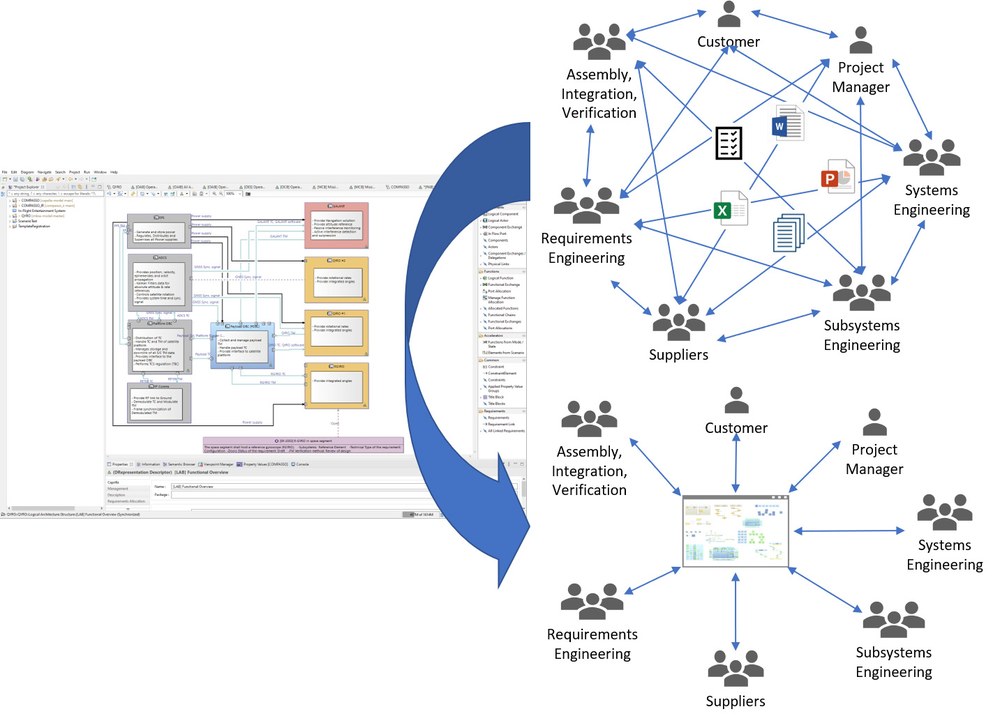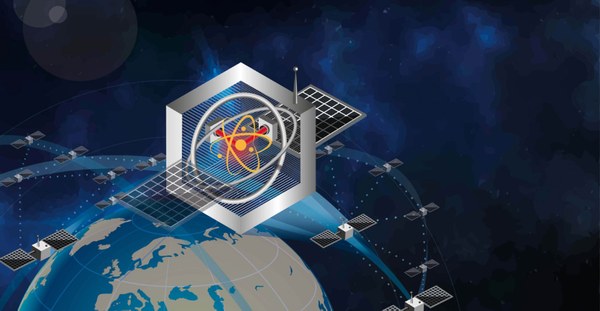Model-Based Systems Engineering
The complexity of space missions results from the countless requirements, dependencies and interfaces that are handled jointly by experts from different disciplines. The exchange of information in document and text form is common, but has many disadvantages, especially for large, complex missions. In addition to the interpretability of natural language, texts allow practically no abstraction of an issue, meaning that the specialist areas involved have to painstakingly filter out the information relevant to them from the overall description.
Capella and Virtual Satellite
In Model-Based Systems Engineering (MBSE), formalised data models are used instead of documents to describe requirements, structure and behaviour. This often allows facts to be visualised better and more easily (for example in the SysML modelling language), as details that are not required for certain tasks can be hidden. Any changes made are always incorporated into the overall model, which enables automated plausibility tests and error analyses. MBSE can therefore be used to support systems engineering from the early concept, through design and implementation, to verification and validation of the resulting product.
The Galileo Competence Center analyses, evaluates and uses various MBSE tools in payload projects. The tools used are customised and further developed for the relevant applications. The main focus is currently on the two modelling environments Virtual Satellite and Capella. "Virtual Satellite is being developed by the DLR Institute of Software Technology. In addition to collaborative work on a standardised digital representation of the system under consideration, Virtual Satellite supports flexible extensions of the basic data model with the necessary functionalities.
The Galileo Competence Center is working in cooperation with the Institute of Software Technology on the further development of Virtual Satellite on the basis of defined use cases. The current development focus is on modelling and verifying the functional behaviour of a system and the corresponding representation in Virtual Satellite. The MBSE software "Capella" was developed by Thales and published under an open source licence in 2015. Capella is based on the "Architecture Analysis and Design Integrated Approach" (ARCADIA) method and is closely linked to it.
ARCADIA combines the methodology, ontology and language used for modelling in Capella. With Capella, the entire design process can be covered and supported, concentrating on a diagram-based modelling approach.
The Galileo Competence Center uses Capella for the modelling of the COMPASSO payload project, in which optical clock technologies and a laser communication terminal for optical data transmission, time synchronisation and distance determination on the International Space Station (ISS) are to be verified. It is also used in the QYRO project, in which a quantum optical gyroscope will be tested and validated on a cube satellite. The aim of using MBSE is to ensure and efficiently control future functionality and reliability during development.





